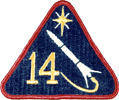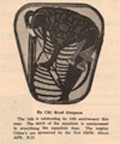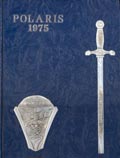This is a design with a confused provenance. A possible explanation (though completely unverified) for this particular rendering, based on an interview with Blair Stephenson, is that the cadets of 14th Squadron submitted their sketch for approval and it was adapted into a standard unit format for final approval (in this case, circular with a lower scroll, although the scroll is blank, suggesting that the design is incomplete).
In the interim, the cadets ordered the patches based on their actual design, not the “official” rendering, and put it into use with the expectation it would be approved as designed. As Blair stated “If I remember correctly, we did not have “official” approval from the Academy or the USAF to make the patch change initially. I think that approval came later, but I don’t recall a specific date. We took the position of “do it, then ask for forgiveness”.
This rendering ended up in the archives with no explanation. “I don’t know where this patch came from – I’ve never seen that one as far as I can recall," – Blair Stephenson, Class of 1969, (February 2020)
Furthermore, the 2006 Polaris features a brief history of squadron patches and cites this design as in use from 1969 until 1971:
The second patch, worn from 1969 until 1971, shows a hooded cobra on a white keystone, superimposed on a blue circle. The number “14” sits in a white circle below the cobra’s hood, and an advanced manned strategic aircraft leaves a red contrail that circles behind the keystone.
There is no evidence to support this contention. Both the 1970 and 1971 Polaris feature the actual Cobra patch, while the 1969 Polaris shows the original 1962 design.















